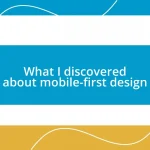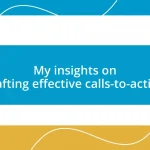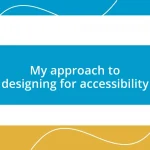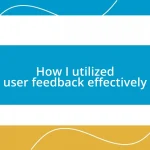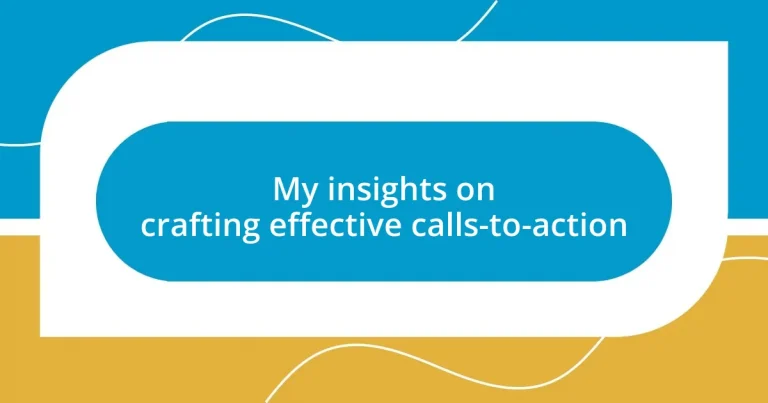Key takeaways:
- A well-crafted call-to-action (CTA) enhances engagement by using clarity, urgency, emotional resonance, and simplicity.
- Design elements such as color, size, placement, and typography significantly affect a CTA’s effectiveness.
- Testing CTAs through A/B testing and considering timing can lead to better user response and higher engagement rates.
- Analyzing performance metrics like click-through rates, conversion rates, and user engagement helps refine and optimize CTAs for better results.
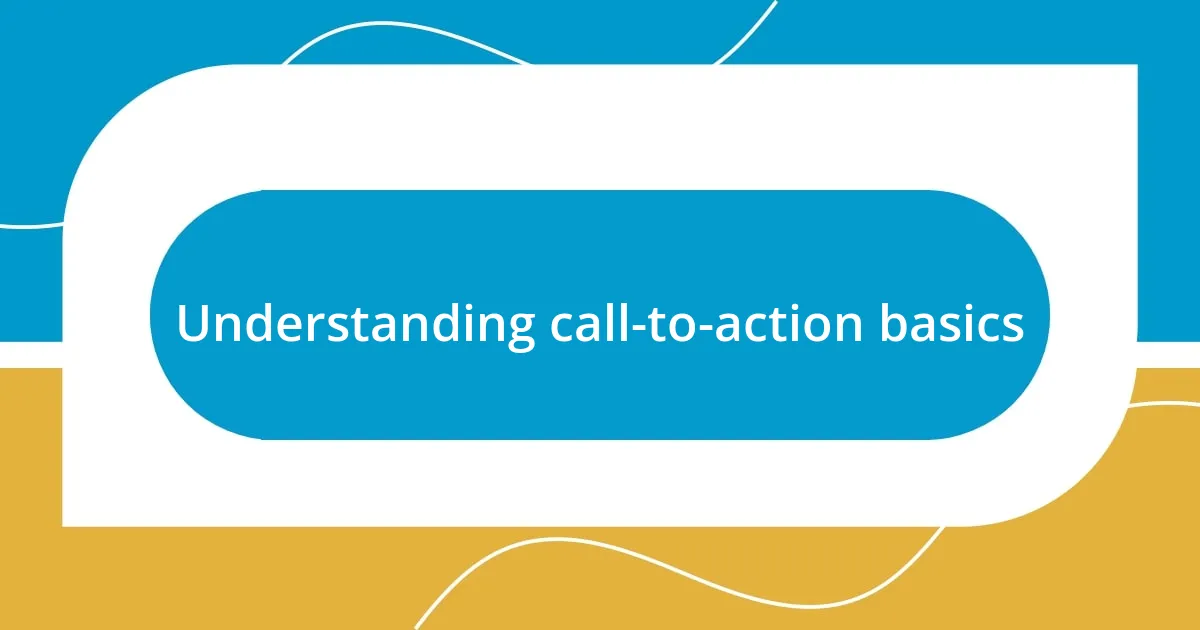
Understanding call-to-action basics
A call-to-action (CTA) is more than just a button or link; it’s the bridge that invites your audience to take a desired step. I’ve always found it fascinating how a well-crafted CTA can transform a passive reader into an engaged participant. Think about it: When was the last time a simple phrase prompted you to make a decision, like signing up for a newsletter or downloading an e-book? It’s the power of persuasion wrapped in clear communication.
When I started focusing on CTAs, I quickly learned that clarity is essential. There’s nothing worse than a confusing prompt that leaves people scratching their heads. I remember crafting a CTA for a campaign early in my career, and I chose a phrase that sounded clever but ended up being vague. The result? Low engagement. This taught me that using straightforward language can significantly enhance response rates.
Additionally, the emotional connection you create can make all the difference. If your CTA resonates emotionally with your audience, it’s more likely to evoke a reaction. Imagine this: you’re reading a heartfelt story about community impact, and then you see a CTA saying, “Join us in making a difference today.” Doesn’t that strike a chord? Emphasizing shared values and purpose can ignite that spark, prompting readers to take action.
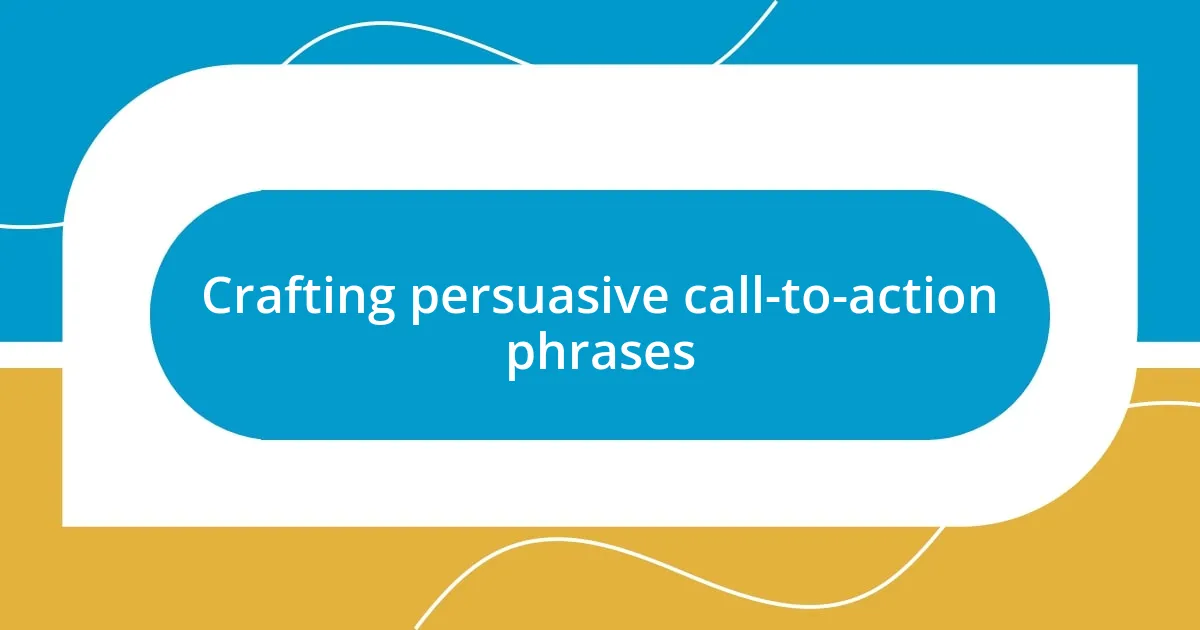
Crafting persuasive call-to-action phrases
Crafting persuasive call-to-action phrases requires a blend of urgency and relevancy. I’ve always noticed that when I incorporate a sense of immediacy—like using words such as “now” or “today”—it compels the reader to act without delay. For instance, during a recent campaign, I used the phrase “Don’t miss out—secure your spot today!” Feedback showed that the urgency genuinely motivated people to sign up promptly. It was a clear reminder that timely wording can skyrocket engagement.
To create impactful CTAs, consider these essential components:
– Clarity: Be direct about what action you want the reader to take.
– Urgency: Words that create a time-sensitive feel can boost responsiveness.
– Benefit: Explain what the reader gains from taking action.
– Emotion: Tap into feelings that inspire action, like excitement or belonging.
– Simplicity: Use straightforward language that resonates with your audience.
Every time I apply these techniques, I find that the results speak for themselves. It’s eye-opening to see how a few words can lead to a cascade of responses, bridging the gap between intention and action.
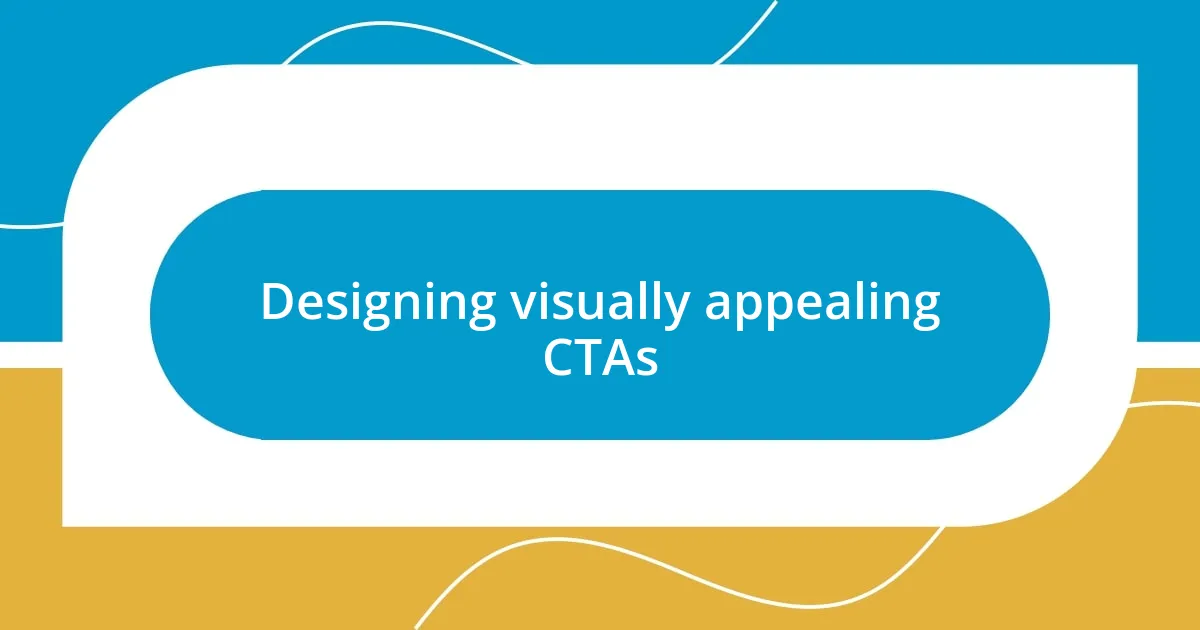
Designing visually appealing CTAs
Designing visually appealing CTAs is crucial for capturing attention and encouraging action. I still remember a project where we spent hours fine-tuning the design of a button. We decided on vibrant colors that contrasted with the rest of the page. The result? A notable increase in click-through rates. Something as simple as color can make a significant difference in grabbing someone’s attention.
It’s also essential to consider the size and placement of your CTAs. They should be prominent but not overwhelming. In my experience, placing a CTA above the fold—where users can see it without scrolling—can lead to higher engagement rates. I once saw a website where the CTA was buried at the bottom, and needless to say, it didn’t perform well. Strategic positioning is as critical as design.
Don’t overlook the power of typography in your CTA design. A well-chosen font can convey the right tone and emotion. I recall experimenting with different fonts for a campaign, where switching to a more dynamic typeface transformed not just the aesthetics but also the reception. It was a reminder that the right visuals can create a mood, prompting users to act instead of just browsing.
| Elements | Strategies |
|---|---|
| Color | Choose vibrant colors that stand out from the background to draw attention. |
| Size | Make it large enough to be noticeable but not so large that it overwhelms the content. |
| Placement | Position CTAs above the fold for higher visibility and engagement. |
| Typography | Use a dynamic font that reflects the message and evokes the right emotion. |
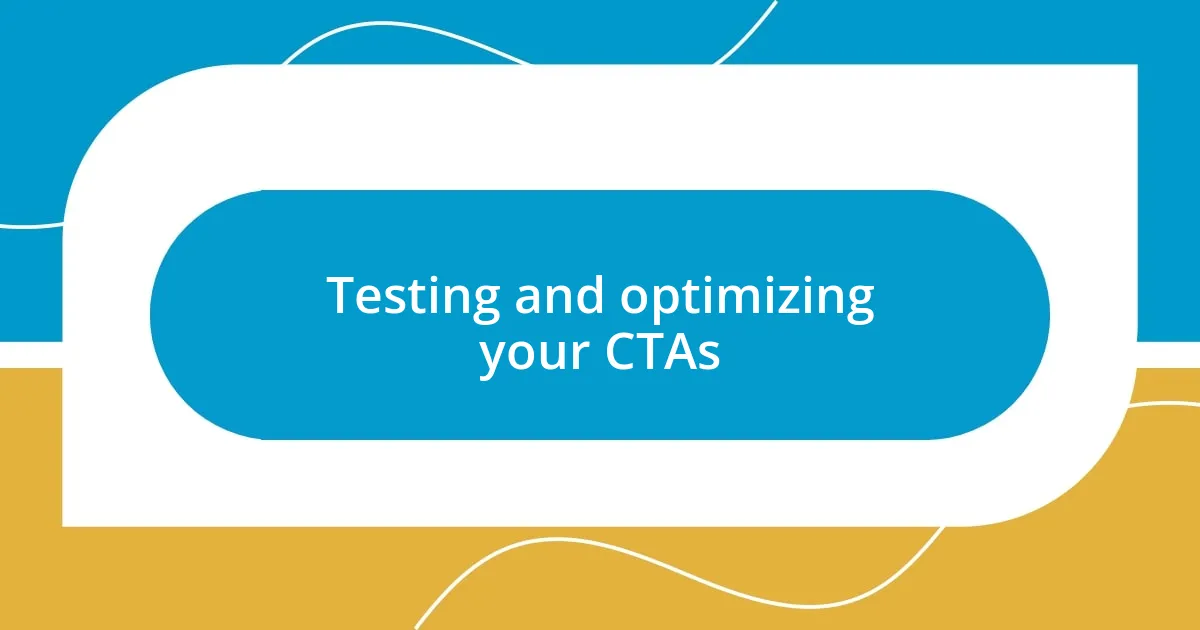
Testing and optimizing your CTAs
When it comes to testing CTAs, I often find myself diving into A/B testing, which allows for side-by-side comparisons. For instance, I recently tested two different phrasings for a subscription button: “Get Started Now” versus “Join the Community Today.” The results were telling; the latter garnered significantly more clicks. It’s fascinating how a slight change in wording can drastically influence a user’s decision.
Optimization goes beyond just wording; it also includes analyzing timing. I recall a campaign where I scheduled my CTAs to appear during peak traffic hours. Surprisingly, I noticed a sharp increase in engagement. Have you ever considered the timing of your messages? Sometimes, it’s not just about the “what” but the “when” of your CTAs that can create that crucial connection.
Moreover, I make it a point to gather qualitative feedback from my audience whenever I can. For one project, I asked users what motivated them to click on certain CTAs. The answers were eye-opening; many emphasized a desire for community or belonging. This feedback drives my future strategies, reminding me that understanding your audience’s motivations is key to refining your calls to action effectively.
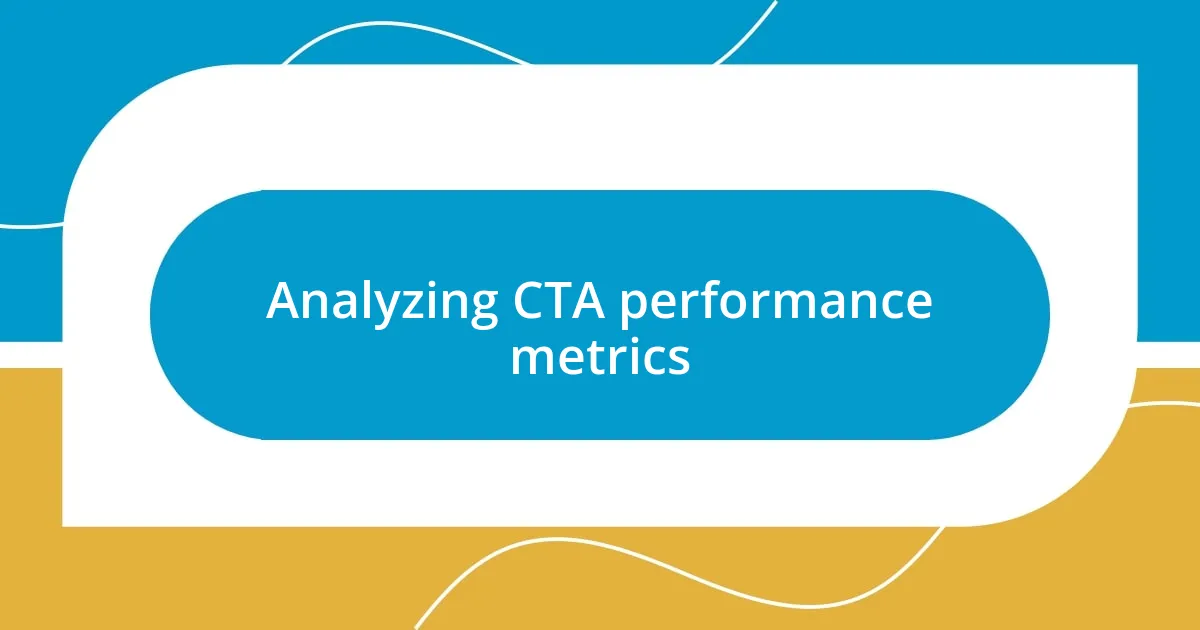
Analyzing CTA performance metrics
To truly gauge the effectiveness of your CTAs, diving into performance metrics is essential. I remember a time when I analyzed click-through rates and conversion rates for a particular campaign. The insights were illuminating; a rise in clicks didn’t always translate to conversions. I learned that while people might be intrigued enough to click, the subsequent experience needs to live up to that initial interest to complete the journey.
Looking at bounce rates can also provide valuable insight. I once noticed a high bounce rate on a landing page tied to a specific CTA. It turned out that while the CTA was enticing, the follow-up content didn’t meet users’ expectations. This taught me that a seamless transition between the CTA and the landing page is crucial for retaining users. Have you ever considered how your content and CTA align? The synergy between them can make or break your campaign’s success.
Lastly, I find that tracking user engagement metrics, like time spent on the page post-click, is invaluable. There was a project where we implemented a CTA that led users to a blog post. When I looked at the time spent on that post, it was well above average, indicating strong interest. This experience reaffirmed for me that a successful CTA doesn’t just prompt a click; it encourages users to engage further. How do you measure that engagement in your campaigns? Understanding this can lead to a more enriched strategy moving forward.


